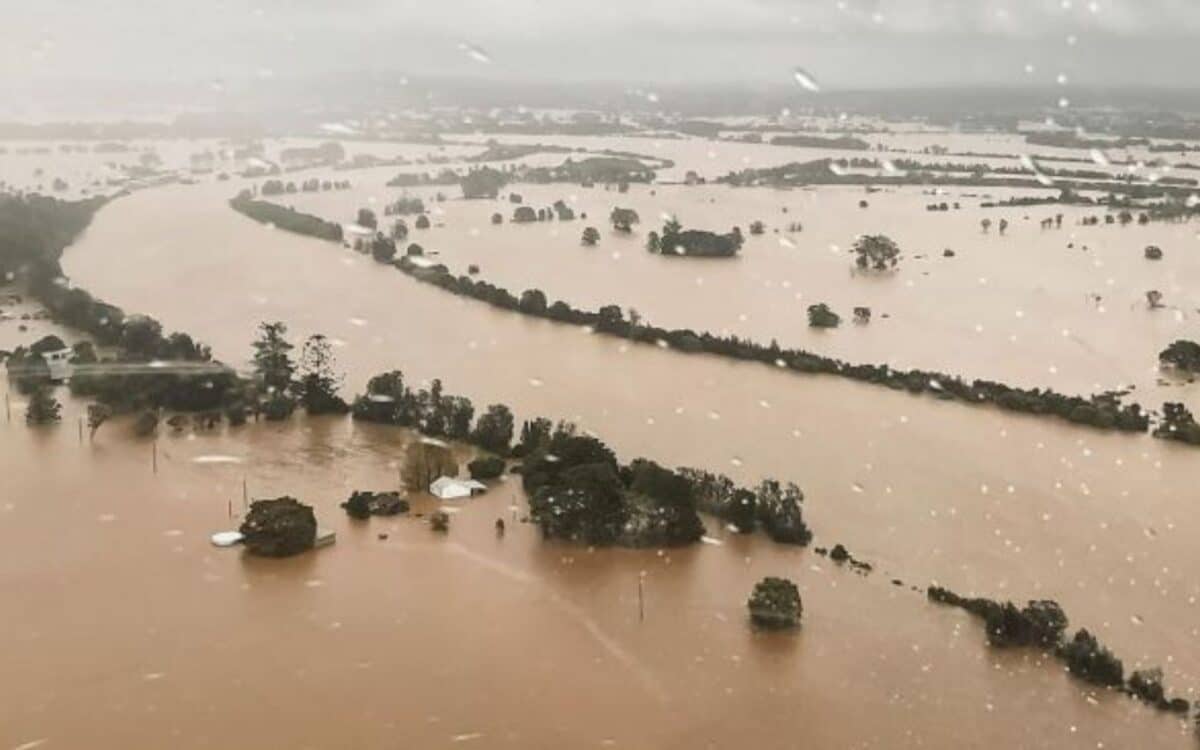Floodwaters are slowly receding across parts of New South Wales (NSW), revealing the first signs of relief after days of intense rainfall and rising rivers that overwhelmed large areas of the state.
While clearer skies have returned, the full extent of the disruption is only starting to emerge.
According to The Sydney Morning Herald, many communities remain cut off, with emergency crews continuing to reach the most affected zones. Preliminary assessments indicate extensive losses, although precise figures are still being verified.
In what has become one of NSW’s most challenging weather responses in recent years, recovery is only just beginning.
Communities Facing Devastation and Ongoing Risk
The flooding has claimed seven lives, with authorities confirming the latest fatalities on Friday. Despite clearer skies, 148 flood warnings remain in effect across NSW, 31 of which are classified as emergency level.
The worst-hit regions include the Mid North Coast and Hunter, particularly Taree, a town previously devastated in 2021.
Premier Chris Minns described the impact on Taree as “incredibly hard” and praised local resilience.
“Now we’re through the worst of the weather, and floodwaters are receding, we want people to be safe during the clean-up phase, and we’re seeing resilient communities doing just that,” he said.
Minns acknowledged the scale of the challenge ahead:
“We know this is a mammoth task. We want to particularly acknowledge the enormous courage the local community has had to exhibit in the last few days.”
Emergency Response and Medical Logistics
Emergency services have responded to 768 incidents, including 52 flood rescues overnight Thursday, primarily of drivers attempting to cross submerged roads.
Deputy Commissioner Daniel Austin emphasized that “there is still a risk,” despite receding water levels, and urged residents to monitor warnings via the Hazards Near Me app.
In a first for Australia, NSW SES used a drone with infrared technology and aerial mapping to deliver urgent medical supplies to two cancer patients in Harrington after floodwaters made the Manning River impassable by boat. Palliative care nurse Tiffany Willis said:
“Within three hours of the drop-off I had treated the patients and was back home. Those two patients were just so relieved and so thankful to receive medical treatment and some reassurance that even though we are still cut off, we’re not completely isolated from help.”
Fatalities in Remote Areas
The body of a man in his 80s was discovered on Friday inside a burnt-out vehicle in a shed in Cooplacurripa, northwest of Taree. Emergency crews had been unable to reach his location earlier due to dangerous conditions.
Another man in his 70s died when his vehicle was swept off a causeway at Nana Glen, and authorities are still investigating a disappearance in Bellingen. A man previously reported missing in Nymboida has been found safe.
Transition to Recovery and Resupply
Emergency Services Minister Jihad Dib said NSW was “moving towards a different phase of this particular incident”. While flood rescues have decreased, authorities are now assisting people in “getting back into their home, in terms of assistance with the clean-up, but also in terms of assistance with other essential items.”
Clean-up and damage assessments are underway in regions such as Smithtown, near the Macleay River, where drone footage revealed widespread inundation. Minns stressed that assessments would take time, stressing:
“That will take a significant amount of time. We have more crews coming in today to continue that work and move through the areas, and we will do that as quickly and safely as possible.”
Insurance and Financial Relief
The Insurance Council of Australia has received over 1,600 claims, with more expected in the days ahead. CEO Andrew Hall noted that insurers have adjusted to year-round operations in response to increasingly frequent weather events.
“We’re now seeing a disaster season really stretched throughout the year, and insurers have had to rebuild their workforces to be able to cope with that,” he said.
Disaster assistance has been extended to 19 local government areas, including Armidale, Muswellbrook, and Walcha.
Grants of $180 per individual and $900 per family are available, along with $1 million community recovery grants. Additional disaster recovery allowances will be activated for Kempsey, Port Macquarie, Mid Coast, and Dungog starting Monday.
Uncertainty and Long-Term Planning
Minns declined to commit to a home buyback scheme similar to the one launched after the 2021 floods in northern NSW, stating:
“I’ve seen these programs, even with the best of intentions, be implemented and not actually work, or apply to just a small number of people, or the money runs out before it can make a difference.”
The government, he added, would focus on solutions that work “for the long haul”, while avoiding the “mistakes of the past.”
Compounding Hazards From Upcoming Cold Fronts
Senior meteorologist Jonathan How from the Bureau of Meteorology warned of two cold fronts expected to sweep through southeastern Australia in the coming days.
These may bring damaging winds, rain, snow, and coastal hazards, further complicating recovery efforts in affected regions and potentially impacting Victoria.
Meanwhile, the storm’s southern advance has already caused train delays in Sydney and disrupted the opening of the Vivid Festival, with rainfall reaching up to 200 mm in some parts of the city.
Fatigue and Resilience in Flooded Communities
NSW SES Commissioner Mike Wassing said:
“In my experience, the worst impacts that people feel are often after the event. The impacts are devastating … to see personal possessions or your business impacted. That is usually felt afterwards.”
He noted that many displaced residents are still in evacuation centers, with clean-up operations likely to span several weeks, not days.
“We are conscious that many of the community members are still in evacuation centres here today. They are tired and they want to get home.”









